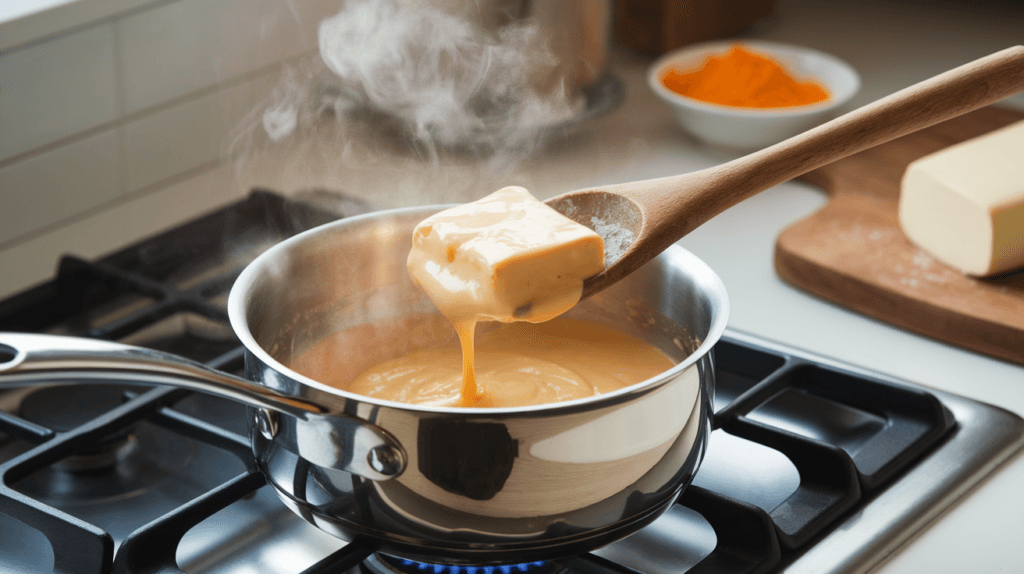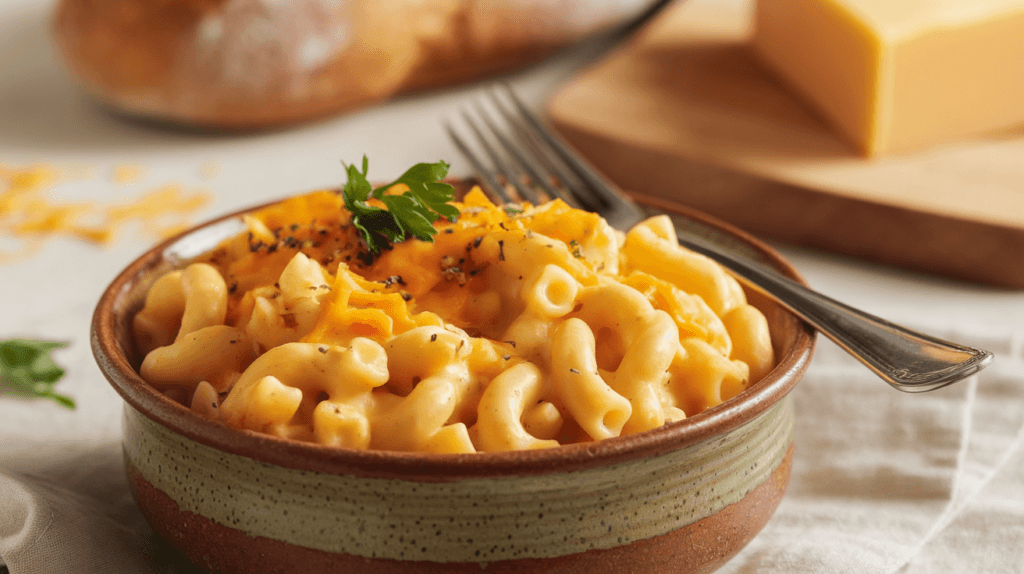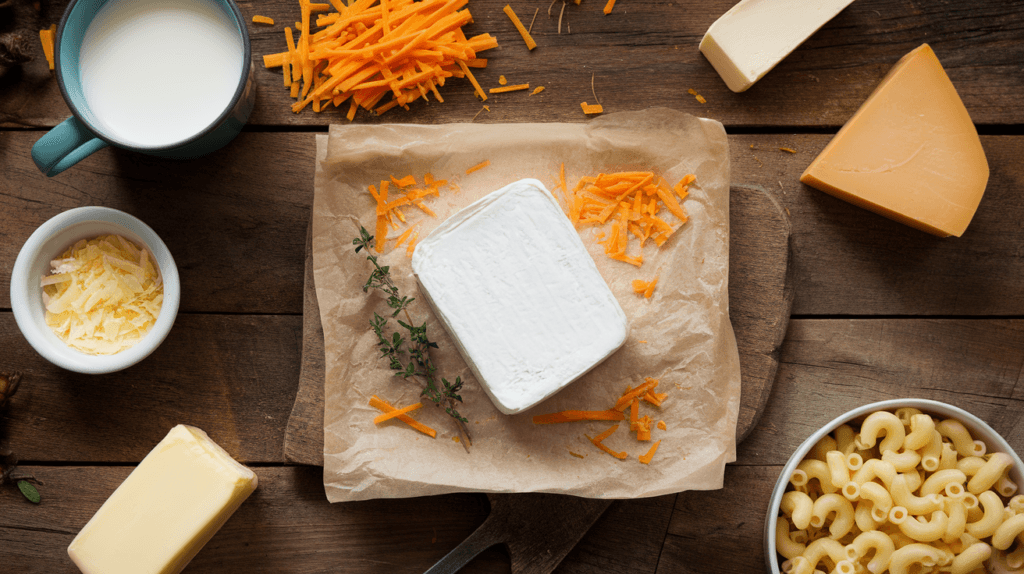Introduction
Introduction: Why Cream Cheese is a Game-Changer for Mac and Cheese
Mac and cheese is a timeless comfort food cherished by people of all ages. Whether it’s baked until golden and crispy on top or served creamy from the stovetop, this dish has an irresistible ability to bring warmth and satisfaction to the table. At the heart of any great mac and cheese recipe is the selection of cheeses, each contributing to the dish’s taste, texture, and overall appeal.
Among the variety of cheeses that can be used, cream cheese has become a secret weapon for many home cooks and chefs alike. While its inclusion might seem unconventional to some, cream cheese has unique properties that can elevate the dish to new levels of decadence. But why exactly should you consider adding cream cheese to your mac and cheese?
In this article, we’ll delve into the science, culinary benefits, and practical tips for incorporating cream cheese into mac and cheese recipes. We’ll explore its ability to enhance creaminess, balance flavors, and create a more cohesive dish. Whether you’re a mac and cheese purist or someone looking to try something new, this guide will help you understand why cream cheese is a must-try addition.
The Role of Cheese in Mac and Cheese
Why Cheese is the Star Ingredient
Cheese is undeniably the hero of mac and cheese. Its rich, creamy texture and bold flavors form the backbone of this beloved dish. From sharp cheddar to gooey mozzarella, the choice of cheese dictates the dish’s flavor profile, texture, and visual appeal. Without cheese, mac and cheese would lose its signature indulgence and heartwarming essence.
Cheese is more than just a flavoring agent; it’s the glue that binds the sauce and pasta together, creating a cohesive dish. The right combination of cheeses can add complexity, a luxurious mouthfeel, and even a slight tanginess that balances the richness of the dish.
Common Cheeses Used in Mac and Cheese Recipes
- Cheddar Cheese: The classic choice for mac and cheese, cheddar offers a sharp and tangy flavor. It’s beloved for its melting properties and ability to create a thick, cohesive sauce.
- Mozzarella: Known for its gooey texture, mozzarella is often used to enhance the stringiness of the dish.
- Parmesan: A harder cheese with a nutty and salty flavor, Parmesan is frequently added for a flavor boost and to create a crusty topping in baked versions.
- Gruyère: With a nutty, slightly sweet flavor, Gruyère is a popular choice for more sophisticated versions of mac and cheese.
- American Cheese: Its ultra-smooth texture and mild taste make it ideal for creating a creamy base.
While these traditional cheeses dominate most recipes, cream cheese is gaining recognition for its versatility and transformative properties in mac and cheese recipes. Adding cream cheese might not have always been a go-to option, but its rising popularity points to its remarkable benefits.
What is Cream Cheese?
History and Origins of Cream Cheese
Cream cheese is a fresh, soft cheese with origins traced back to 19th-century America. Created by combining cream and milk with lactic acid, it develops a smooth, spreadable texture that has made it a favorite for both savory and sweet dishes. Initially marketed as a breakfast spread, cream cheese has since found its way into countless recipes, thanks to its versatility.
Unique Properties of Cream Cheese
What sets cream cheese apart from other types of cheese is its high fat content and mild, tangy flavor. These characteristics make it an excellent ingredient for adding richness and a velvety consistency to dishes. Unlike aged cheeses that can sometimes overpower recipes, cream cheese subtly enhances the dish without dominating the palate.
Cream cheese’s ability to melt smoothly and emulsify liquids makes it a practical addition to mac and cheese. It acts as a bridge between the cheese sauce and pasta, ensuring that every bite is equally creamy and flavorful.
Benefits of Adding Cream Cheese

Enhancing Creaminess and Texture
One of the primary reasons to add cream cheese to mac and cheese is its ability to transform the texture of the dish. Cream cheese imparts a silky smoothness to the cheese sauce, eliminating the risk of graininess that sometimes occurs with other cheeses. Its rich consistency ensures that the sauce clings perfectly to every piece of pasta, creating a luxurious mouthfeel with every bite.
Unlike some cheeses that can separate when heated, cream cheese melts evenly and integrates seamlessly into the sauce. This results in a cohesive and stable mixture, perfect for both stovetop and baked versions of mac and cheese.
Boosting the Flavor Profile
While cream cheese has a mild flavor, its slight tanginess adds depth to mac and cheese. It complements the sharpness of cheddar, the nuttiness of Gruyère, and even the saltiness of Parmesan, enhancing the overall flavor without overwhelming the dish. When used in combination with other cheeses, cream cheese serves as a subtle flavor booster, creating a more balanced and well-rounded taste.
Balancing Richness
Cream cheese has a unique ability to balance the dish’s richness. While mac and cheese is inherently indulgent, the tangy notes of cream cheese prevent the dish from feeling overly heavy. This balance allows you to enjoy the creamy decadence of mac and cheese without feeling weighed down, making it a win-win for both flavor and satisfaction.
Extending the Sauce Volume
Another practical benefit of cream cheese is that it helps to stretch the cheese sauce. Because it integrates so well with other ingredients, cream cheese can extend the volume of the sauce without requiring additional cheese or heavy cream. This not only saves costs but also ensures a consistent texture throughout the dish.
How Cream Cheese Affects the Dish

Creating a Smoother Consistency
Adding cream cheese to mac and cheese significantly enhances the sauce’s consistency. Unlike aged cheeses, which can sometimes create lumps or a gritty texture, cream cheese breaks down smoothly when heated. Its emulsifying properties ensure that the sauce remains velvety and uniform, even when reheating leftovers.
By acting as a stabilizer, cream cheese prevents the separation of fats and liquids in the cheese sauce, which is especially helpful when combining multiple types of cheese. This stability makes it easier to achieve the perfect mac and cheese texture, regardless of the cooking method used.
Improving Sauce Stability
If you’ve ever noticed a mac and cheese recipe where the sauce curdles or becomes greasy, cream cheese can be a lifesaver. Its high fat content and creamy texture help bind the ingredients together, maintaining a cohesive and glossy sauce. This stability is particularly valuable for baked mac and cheese, where prolonged heat can sometimes cause traditional cheese sauces to break down.
Moreover, cream cheese pairs well with other dairy products like milk and heavy cream, acting as a bridge that enhances the overall texture. Whether you’re using it as a primary ingredient or a supporting one, cream cheese ensures that your mac and cheese stays creamy and luscious from start to finish.
Flavor Variations with Cream Cheese
Adding Spices and Herbs
Cream cheese’s mild flavor provides a blank canvas for customization. You can elevate your mac and cheese by incorporating spices and herbs like:
- Garlic Powder and Onion Powder: For a savory depth of flavor.
- Paprika or Cayenne Pepper: To add a touch of smokiness or heat.
- Fresh Herbs: Chives, parsley, or thyme add brightness to balance the richness of the dish.
Experimenting with Different Cheese Combinations
Cream cheese pairs wonderfully with a variety of other cheeses. Here are some combinations to try:
- Cream Cheese and Blue Cheese: For a bold and tangy flavor twist.
- Cream Cheese and Brie: A luxurious pairing that adds creaminess and a slight earthiness.
- Cream Cheese and Smoked Gouda: Perfect for a smoky, rustic version of mac and cheese.
Incorporating Add-Ins
For added texture and flavor, consider mixing in ingredients like:
- Crispy Bacon: A salty and crunchy contrast to the creamy sauce.
- Caramelized Onions: To enhance the sweetness and umami notes.
- Roasted Vegetables: Broccoli, cauliflower, or butternut squash work well.
Health Considerations
Nutritional Aspects of Cream Cheese
Cream cheese is a calorie-dense ingredient due to its high fat content, which contributes to its creamy texture. A two-tablespoon serving contains approximately 100 calories and 9 grams of fat. While this makes it a rich addition, using it in moderation can balance indulgence with nutrition.
Caloric Impact and Portion Control
To keep your mac and cheese dish within a reasonable calorie range, consider pairing cream cheese with lower-fat milk or opting for whole-grain pasta. These choices can offset some of the richness without compromising flavor. Additionally, serving smaller portions can help you enjoy the dish guilt-free.
Allergy and Dietary Considerations
For those with dietary restrictions, there are alternatives like dairy-free cream cheese made from cashews or tofu. These options mimic the texture of traditional cream cheese and allow people with lactose intolerance or vegan diets to enjoy creamy mac and cheese.
Common Misconceptions
Myths About Cream Cheese in Cooking
Some people hesitate to use cream cheese in mac and cheese due to misconceptions about its role in the dish. Here are a few myths and the truth behind them:
- “Cream cheese is too tangy for mac and cheese.”
While cream cheese does have a tangy note, this flavor blends seamlessly with other cheeses and enhances the dish rather than overpowering it. - “It makes the dish too heavy.”
When used in the right proportion, cream cheese adds richness without making the dish overly dense. The balance comes from pairing it with lighter ingredients like milk or broth. - “It’s not traditional.”
While cream cheese may not have been part of the original mac and cheese recipes, culinary innovation often leads to new and improved classics. Many chefs and home cooks now swear by its inclusion for better texture and flavor.
Addressing Concerns About Texture
A common concern is that cream cheese might make the sauce clumpy. This usually happens if it’s not softened or mixed properly. Following proper melting techniques and whisking it thoroughly into the sauce ensures a smooth and creamy consistency.
Culinary Science Behind Cream Cheese in Mac and Cheese
The Role of Fat Content
The high fat content of cream cheese plays a crucial role in mac and cheese. Fat is essential for creating a rich, smooth sauce as it binds with the proteins in the cheese to form a stable emulsion. This prevents the sauce from separating and ensures a luscious, velvety finish.
How Cream Cheese Emulsifies Sauces
Cream cheese acts as an emulsifier, helping water and fats combine into a consistent mixture. This property is particularly useful when using multiple types of cheese, as it keeps the sauce uniform and prevents it from becoming oily or gritty.
Impact on Cooking Temperature
Because cream cheese has a lower melting point than aged cheeses, it helps stabilize the sauce at lower cooking temperatures. This reduces the risk of overcooking the cheese and maintains the dish’s creamy texture.
Popular Recipes Featuring Cream Cheese

Classic Cream Cheese Mac and Cheese
Ingredients:
- 1 lb elbow macaroni
- 4 oz cream cheese
- 2 cups shredded cheddar cheese
- 1 cup milk
- 2 tbsp butter
- Salt and pepper to taste
Instructions:
- Cook macaroni until al dente and set aside.
- In a saucepan, melt butter over medium heat and whisk in the cream cheese until smooth.
- Gradually add milk, whisking to combine.
- Stir in cheddar cheese until melted, then season with salt and pepper.
- Combine the cheese sauce with the pasta and serve warm.
Baked Mac and Cheese with Cream Cheese
Add breadcrumbs and bake for 20 minutes at 375°F for a crispy topping. Mix in cream cheese for the sauce base to ensure it stays creamy during baking.
FAQs About Cream Cheese in Mac and Cheese
1. Why does cream cheese make mac and cheese creamy?
Cream cheese has a high fat content and emulsifying properties that stabilize the sauce, preventing it from separating and ensuring a smooth consistency.
2. Can cream cheese replace other cheeses entirely?
While cream cheese can be the main cheese in the sauce, combining it with other cheeses like cheddar or Parmesan provides more depth and complexity.
3. What is the best brand of cream cheese for mac and cheese?
Most mainstream brands, such as Philadelphia, work well, but you can also experiment with local or artisanal options for unique flavors.
4. Is cream cheese suitable for baked mac and cheese?
Yes, cream cheese adds stability to the sauce, ensuring it remains creamy even after baking.
5. Can lactose-intolerant individuals use cream cheese in mac and cheese?
Lactose-free cream cheese options are available and can be used as a substitute for those with dietary restrictions.
6. Does cream cheese change the flavor of mac and cheese significantly?
No, cream cheese subtly enhances the flavor without drastically altering the dish, making it creamier and slightly tangier.
Conclusion
Why You Should Try Cream Cheese in Mac and Cheese
Cream cheese is a versatile ingredient that can elevate mac and cheese from good to unforgettable. Its ability to enhance creaminess, stabilize sauces, and balance flavors makes it a valuable addition to any recipe. Whether you’re making a classic stovetop version or a baked variation, cream cheese ensures that your mac and cheese will be rich, creamy, and utterly satisfying.
By experimenting with ratios, cheese combinations, and flavor add-ins, you can tailor the dish to suit your taste and preferences. Don’t hesitate to try this secret weapon in your next mac and cheese recipe—you may never go back to the old way of making it!

